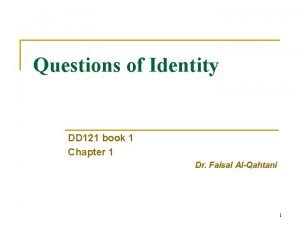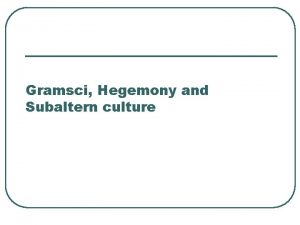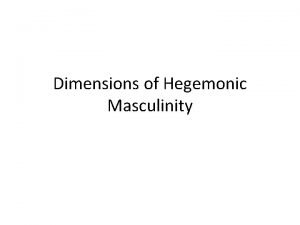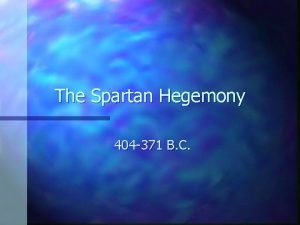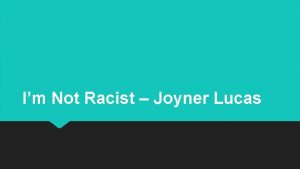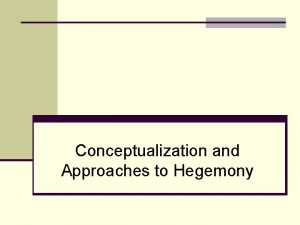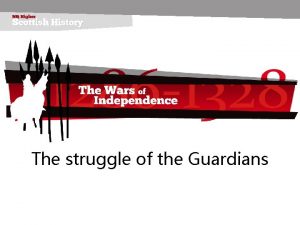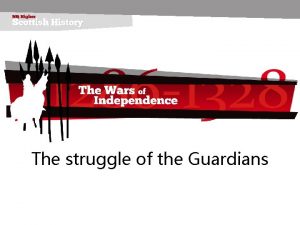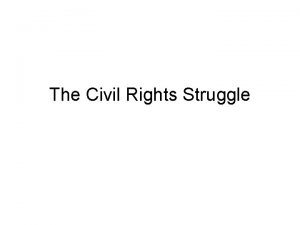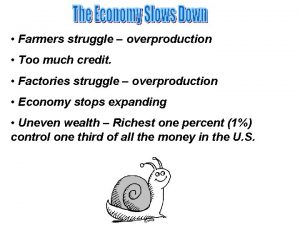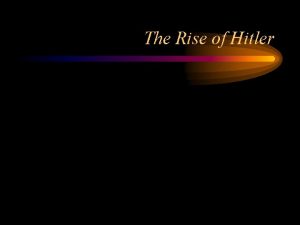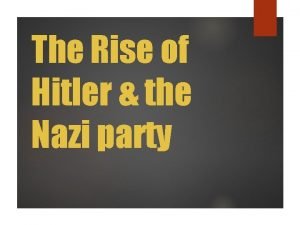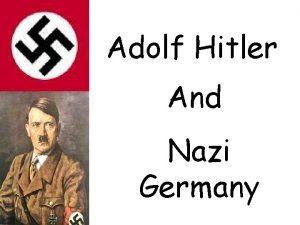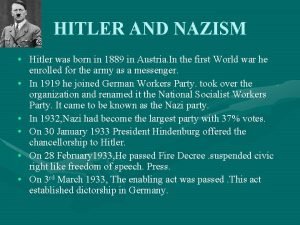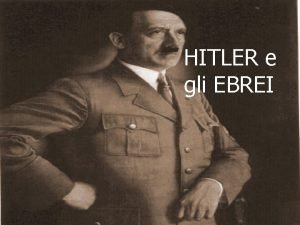Is Hitler Racist Enough The Struggle for Hegemony




















- Slides: 20

“Is Hitler Racist Enough? ” The Struggle for Hegemony within the völkisch Movement in the North German Countryside

Who were the German Racists? • Deutsch-völkisch Freiheitspartei (DVFP), founded December 1922 after radical anti-Semites ejected from German Nationalist People’s Party, banned 1923 • February 1924 electoral alliance with NSDAP as Völkisch-Sozial Bloc (VSB) • After successful May 1924 election campaign, DVFP tried to gain hegemony within the racist movement while Hitler loyalists tried to maintain their independence • In run up to May 1928 election, DVFP tried to exploit rural unrest through alliance with Landvolk- und Mittelstandspartei as the Völkisch-National Bloc (VNB)


Locating the study

Percentages of votes cast for the competing völkisch parties, May 1928

German Racist/Nazi competition, May 1928 Votes of 33. 3 -66. 6% Percentage of 126 places with. Percentage vote range total vote Racist vote NSDAP 30, 195 7. 8% 69. 3% VNB 13, 379 3. 5% 30. 7% 37 places with vote range 45 -55% Polling place leader 100% of vote 0% with competition 0% both parties NSDAP 235 39 95 12 VNB 301 97 39 12 tied 12 Not available 16

The “Noakes” Thesis • The German Racists tried to exploit concerns about Point 21 in the Nazi Party program • Consequently, the German Racists did best among well-to-do farmers in the fertile Marsch areas, while the Nazis did better among poor farmers on the less fertile Geest

Leaflet Racists as a matter of course recognize private property as the essential basis of any culture. Is it völkisch when the program of the NSDAP demands a law for the uncompensated nationalization of land? Or is that Marxism? To be völkisch is to fight all three supernational powers: the Free Masons, the Jesuits, and the Jews. Hitler does not fight against Rome and the Jesuits. … He is only interested in the Jews.

Data analysis of the “Noakes” Thesis Correlation of land tax/hectare to percentage of votes cast for the Völkisch-National Bloc and the NSDAP Party P-value VNB 0. 243 NSDAP 0. 015

Data analysis of the “Noakes” Thesis Party P-value VNB 0. 243 NSDAP 0. 015 Pop/den Agrarianism P-value VNB 0. 001 NSDAP 0. 000 P-value Liberalism P-value VNB 0. 000 VNB 0. 159 NSDAP 0. 003 NSDAP 0. 000

Regression analysis VNB NSDAP P-value R-squared Tax/Den 0. 003 2. 0% 0. 000 3. 0% Tax/Liberal 0. 000 3. 4% 0. 000 6. 2% Tax/Agrarian 0. 000 3. 9% 0. 000 4. 3% Tax/Den/Agrarian 0. 000 5. 2% 0. 000 5. 7% Tax/Den/Liberal 0. 000 5. 1% 0. 000 8. 1% Den/Agrarian 0. 001 2. 6% 0. 000 2. 4% Den/Liberal 0. 000 4. 5% 0. 000 6. 0%

Mapping the “Noakes” Thesis

The Hamilton Thesis • In his extensive statistical analysis of Weimar voting patterns based on county-level data, Richard Hamilton argued that within majority Protestant areas, the major factors determining the growing support for National Socialism were – Innovative, energetic local activists – Support from the “establishment” press • Establishment press support was non-existent in northwest before 1932, only one Nazi newspaper in study area

Leading party within the völkisch block by polling place, May 1928 Hadeln Norden Emden Aurich Leer Rheiderland Stade Wittmund Geestemünde Bremervörde Oldenburg Blumenthal

Areas exhibiting National Socialist dominance Marsch Wittmund Norden Aurich Moor Marsch Geest Oldenburg Moor

Areas exhibiting German Racist dominance Hadeln Voß Bohnens Emden Marsch st e Ge Fetz

Carolinensiel Wilhelmshaven was a center of anti-Semitic agitation since 1919 Carolinensiel • 1925: 1530 inhabitants • Votes/percentages • 1924 (283/49. 9%) • 1928 • VNB (204/39. 8%) • NSDAP (44/8. 6%)

Carolinensiel • Wilhelmshaven was a center of anti-Semitic agitation since 1919 • Carolinensiel • 1925: 1530 inhabitants • Votes/percentages • 1924 (283/49. 9%) • 1928 • VNB (204/39. 8%) • NSDAP (44/8. 6%)

Carolinensiel Heinrich van Dieken • Son of a school teacher • War veteran • School teacher in Carolinensiel since 1918 • Well-liked, active in DVSTB and DVFP • Member of the Prussian Landtag, 1924 -1930 • Refused to join NSDAP

Conclusions • The “Noakes” Thesis does not stand up to statistical or spatial analysis • GIS helps us understand what other factors were perhaps more important – Existing historical political patterns – The importance of strong personalities who were able to bend local voting behavior to their will
 Our failing schools enough is enough
Our failing schools enough is enough Too enough not enough
Too enough not enough And doggone it i'm good enough
And doggone it i'm good enough Our failing schools enough is enough summary
Our failing schools enough is enough summary What is identity
What is identity Ideology
Ideology Rincewind racist
Rincewind racist Hegemony gramsci
Hegemony gramsci From culture to hegemony summary
From culture to hegemony summary Male hegemony
Male hegemony Spartan hegemony
Spartan hegemony Varför kallas perioden 1918-1939 för mellankrigstiden?
Varför kallas perioden 1918-1939 för mellankrigstiden? Verksamhetsanalys exempel
Verksamhetsanalys exempel Borstål, egenskaper
Borstål, egenskaper Tack för att ni har lyssnat
Tack för att ni har lyssnat Läkarutlåtande för livränta
Läkarutlåtande för livränta Vishnuismen
Vishnuismen Vad står k.r.å.k.a.n för
Vad står k.r.å.k.a.n för Cks
Cks Inköpsprocessen steg för steg
Inköpsprocessen steg för steg Påbyggnader för flakfordon
Påbyggnader för flakfordon




